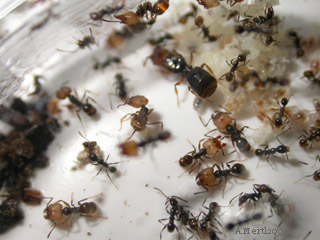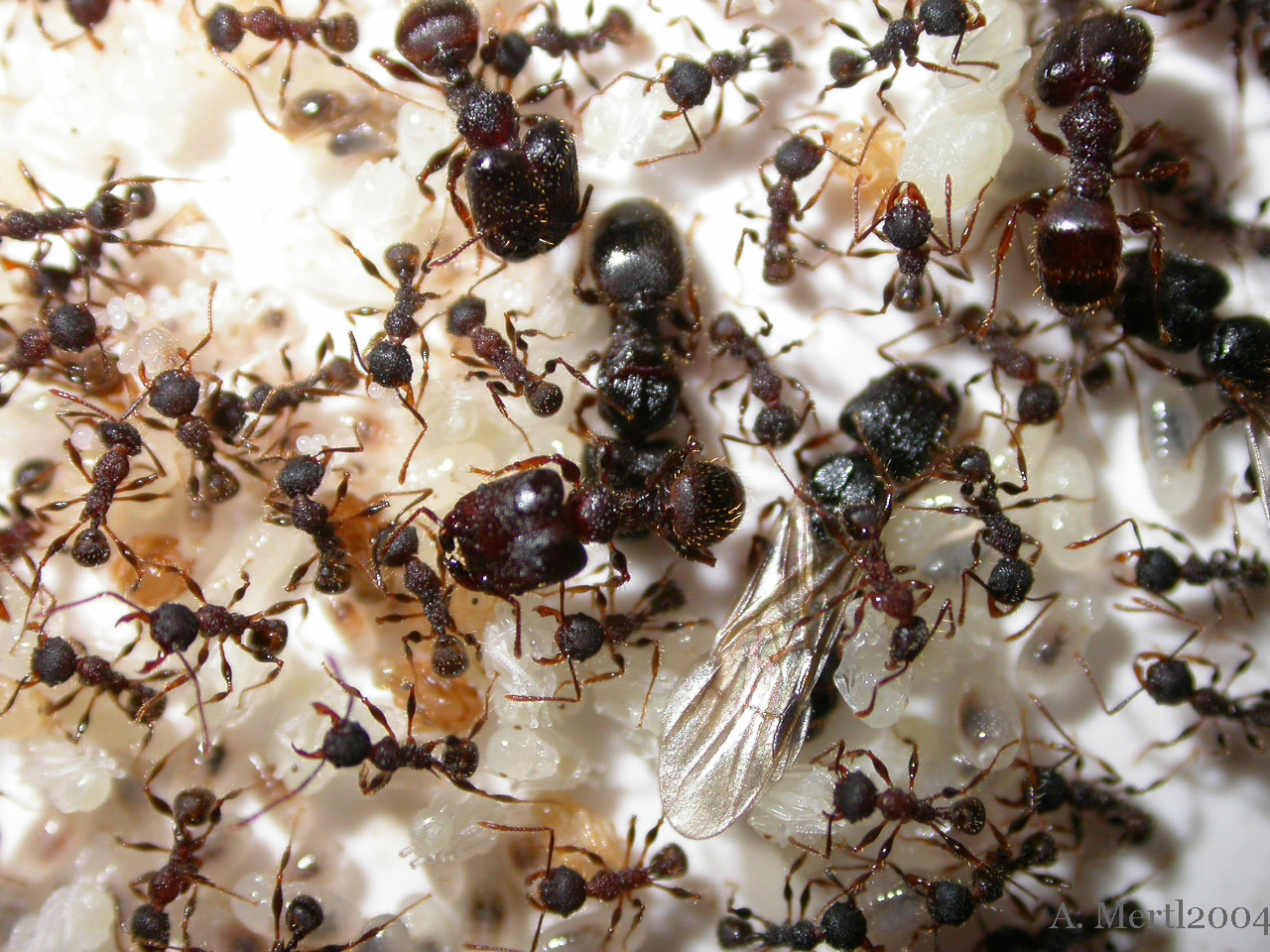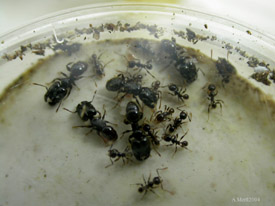Current Projects:
1. Survey of twig and litter-nesting ants along an Amazonian flooding gradient: An exhaustive survey of twig and litter ant fauna in 84 3X3m plots of forest floor. The survey covered 9 sites representing the range of flooding disturbance at Tiputini - from areas which never flood to those that typically flood 40 - 70 days per year. The goal of this survey was to document the diversity of tropical twig and litter nesting ants, a poorly known fauna, as well as test for elevated species richness at intermediate disturbance levels. We found a total of 80 species in 21 genera. The non-flooded forest had the highest species richness, showing no evidence of intermediate disturbance elevating levels of alpha diversity. Results suggest however that it may increase beta diversity.
I also re-checked the plots after one, three or seven months to look at colonization and dispersal rates. I'm still in the process of identifying species and analyzing this data, as well as data on the spacing of nests, twig nest preference, importance of soil type and environmental factors, and presence of termites in the plots.
2. The Pheidole of Tiputini - a general natural history study of the genus Pheidole at my study site, including ecological information such as nesting site, colony size, habitat preference, abundance and foraging behavior for the 60 species I have found there. I am also revising taxonomic keys for the majors and minors (to some extent) which I will post here soon. My species list includes around 15 - 20 potential new species, with the help of Stefan Cover I hope to describe and name many of these in the future.
3. Subcaste Morphology and Behavioral Plasticity - Pheidole colonies contain two distinct worker subcastes - majors and minors. While minors perform most of the brood care, majors are typically highly specialized for colony defense or seed milling and perform little to no brood care. I wanted to test for a possible trade off between morphological specialization and behavioral plasticity by creating subcolonies of only major workers and brood to test how well majors could perform brood care if forced to. Subcolonies of majors and minors were separated from their queenright colony by a fine mesh to allow only smell to pass through (see photo above). We measured rates of brood care and brood survival in 79 colonies of 17 species. I am currently in the process of taking morphological measurements using an automontage synchoscopy system, in order to measure the amount of morphological specialization of majors in the different species. Preliminary results show some trends, with more morphologically specialized majors having lower rates of brood survival.
4. Phylogeny construction and comparative analysis - Over the course of four field seasons I have collected ecological and behavioral data as well as abundance data on the 60 species of Pheidole using baiting and survey techniques. I am in the process of sequencing the 16S gene for my group of species, with plans to also sequence the ND1 and H3 genes in order to construct a phylogeny. This phylogeny will be used to compare the ecological and behavioral traits of rare and abundant species while taking into account phylogenetic similarities.
|





